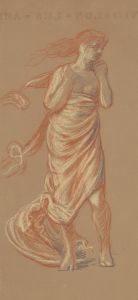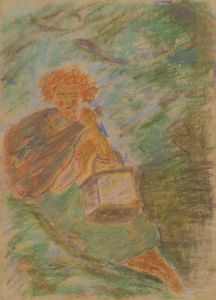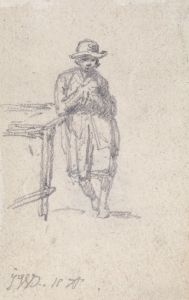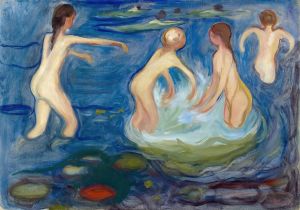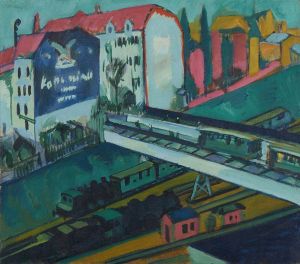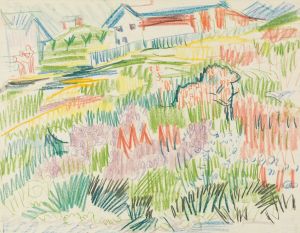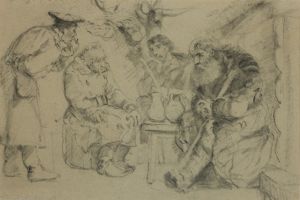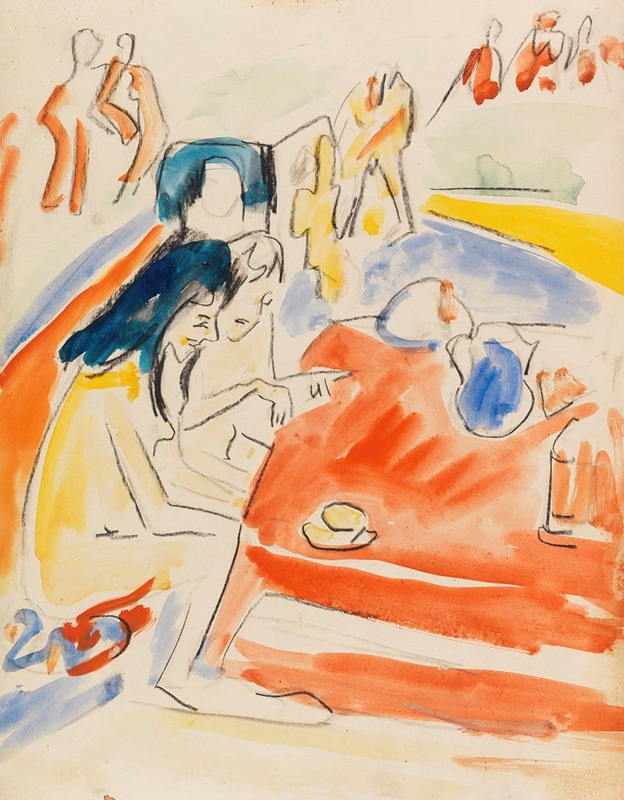
Zwei am Tisch sitzende Mädchen
A hand-painted replica of Ernst Ludwig Kirchner’s masterpiece Zwei am Tisch sitzende Mädchen, meticulously crafted by professional artists to capture the true essence of the original. Each piece is created with museum-quality canvas and rare mineral pigments, carefully painted by experienced artists with delicate brushstrokes and rich, layered colors to perfectly recreate the texture of the original artwork. Unlike machine-printed reproductions, this hand-painted version brings the painting to life, infused with the artist’s emotions and skill in every stroke. Whether for personal collection or home decoration, it instantly elevates the artistic atmosphere of any space.
Ernst Ludwig Kirchner was a prominent German expressionist painter and a founding member of the artist group Die Brücke, which played a pivotal role in the development of modern art in the early 20th century. One of his works, "Zwei am Tisch sitzende Mädchen" (Two Girls Sitting at a Table), exemplifies his distinctive style and thematic focus.
Kirchner was born in 1880 in Aschaffenburg, Germany, and studied architecture in Dresden before fully committing to painting. His work is characterized by bold colors, dynamic compositions, and a focus on the human figure, often exploring themes of modernity and the human experience in an increasingly industrialized world. Kirchner's style was heavily influenced by non-European art, particularly African and Oceanic art, which he encountered through ethnographic museums and collections.
"Zwei am Tisch sitzende Mädchen" is a painting that reflects Kirchner's interest in capturing intimate and everyday moments with an expressive flair. The painting depicts two young women seated at a table, engaged in what appears to be a moment of quiet interaction. Kirchner's use of color is vivid and non-naturalistic, a hallmark of expressionism, which seeks to convey emotional experience rather than physical reality. The figures are rendered with bold outlines and simplified forms, emphasizing their presence and the emotional undercurrents of the scene.
The setting of the painting is likely an interior space, suggested by the presence of the table and the close proximity of the figures. Kirchner often painted scenes of domestic life, cafes, and urban environments, capturing the essence of early 20th-century life. His work frequently explored the roles and identities of women, reflecting both the changing social dynamics of the time and his personal relationships.
Kirchner's art was deeply affected by the socio-political upheavals of his time, including World War I and the subsequent changes in German society. His experiences during the war, where he served as a driver, led to a nervous breakdown, and his work from this period reflects a darker and more introspective tone. Despite these challenges, Kirchner continued to produce art that was innovative and influential.
"Zwei am Tisch sitzende Mädchen" is part of Kirchner's broader oeuvre that has been celebrated for its contribution to the expressionist movement. His work has been exhibited in major museums and galleries worldwide, and he is regarded as one of the leading figures in modern art. Kirchner's legacy is marked by his ability to capture the complexities of human emotion and the vibrancy of modern life through his unique artistic vision.
In 1937, the Nazi regime in Germany condemned much of Kirchner's work as "degenerate art," leading to the removal of his paintings from German museums. This period was a difficult time for Kirchner, who had moved to Switzerland in 1917. He continued to work there until his death in 1938. Despite the challenges he faced, Kirchner's work has endured and continues to be celebrated for its emotional depth and innovative approach to form and color.
"Zwei am Tisch sitzende Mädchen" remains a testament to Kirchner's skill in capturing the essence of human interaction and the expressive potential of color and form. His work continues to inspire and influence artists and art enthusiasts around the world.





